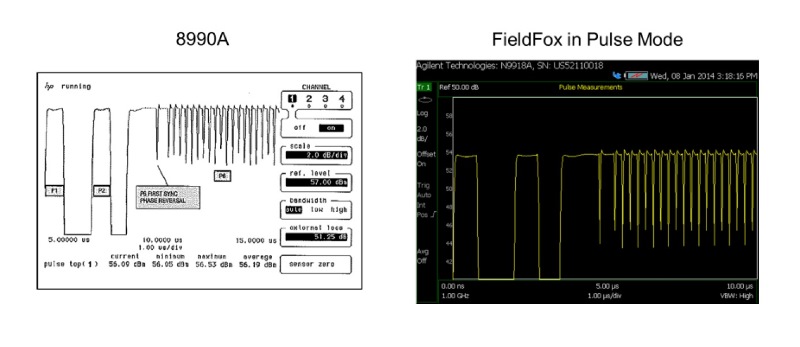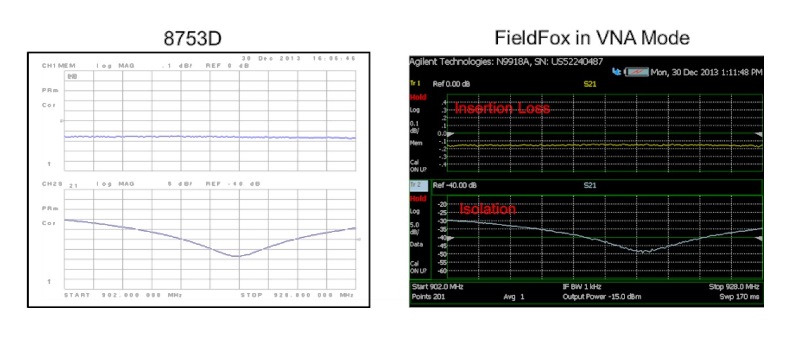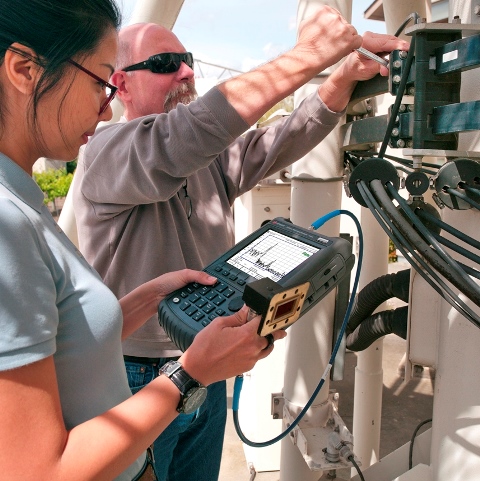By Rolland Zhang, Product Manager
Keysight Technologies Inc.
www.keysight.com
Radar systems are used in a multitude of applications, from traffic enforcement to weather prediction. Some of these are mission-critical systems, meaning that any malfunction or failure puts lives at risk. To help ensure favorable outcomes and enhance system uptime, routine maintenance and occasional troubleshooting and repair are essential. All must be done quickly, accurately and dependably, and often in harsh environmental conditions.
The realities of radar installation and maintenance make this difficult. Because mission-critical systems are often highly complex, benchtop-caliber results are needed; however, making accurate measurements in the field using benchtop equipment is not easy. Luckily, the breakthrough technologies now available offer system maintainers a new way to test mission-critical radar systems in the field.
The Basics
Radar systems fall into several categories such as meteorological, civilian air traffic control and military air defense. A prime example of a widely used mission-critical system is commercial air traffic control. These transmit and receive waveforms—pulsed, unmodulated continuous wave (CW), and FM-CW—that, when processed, provide important information regarding target range, size and shape; velocity and trajectory; azimuth angle and elevation angle; and aircraft identification.
When characterizing and troubleshooting radar systems and components in the field, it is often necessary to measure time-and frequency-domain performance over a variety of test conditions. Given the complexity of today’s systems, maintainers also must coordinate and compare waveforms in both domains. Maintainers may even need to test and tune various radar functional blocks or line-replaceable units (LRUs).
Traditionally, such testing has been performed using multiple benchtop instruments. This is especially true at the LRU level, which often requires a set of basic measurements in both the time and frequency domains (e.g., absolute and relative amplitude and phase) and various combinations of those measurements.
Covering all of the necessary measurements often requires three or four separate instruments. For example, a peak power meter is used to measure the absolute amplitude of a transmitter as a function of time, but a spectrum analyzer is needed to measure absolute amplitude as a function of frequency. When performing relative measurements, the peak power meter can measure the relative time and amplitude of a waveform, but a vector network analyzer (VNA) or vector voltmeter is needed to measure amplitude/phase vs frequency.
Fig. 1 shows the instruments typically used over the past several decades to field-test civilian aviation radars. Because most such equipment is designed for indoor use, the test site must have weather protection to ensure safe, accurate operation.

Fig. 1: Benchtop instruments generally require several minutes of warmup time, which is not ideal for field use.
This traditional approach has several other issues. First, the accuracy of benchtop instruments is generally specified by the manufacturer only when operated at a set temperature (for instance, 23°C ±5°C). In the field, testing may occur over a wide range of environmental conditions, causing uncertainty in the measured data.
Second, maintainers often use older benchtop equipment, which becomes difficult to maintain or repair when it goes out of support life. Switching to newer instruments is beneficial in terms of reducing the overall cost-of-test because many have three-year warranties and lower overall maintenance costs. Newer instruments also generally provide higher performance, improved accuracy and application-specific functions. However, one-for-one instrument replacement is not the optimum solution in radar applications.
Today, combination or all-in-one analyzers (see sidebar “The FieldFox all-in-one analyzer,” below ) provide multi-instrument capability to offer convenient and economical solution for testing radar systems. The key to ensuring successful, accurate results is, of course, selecting the appropriate instrument.
Using field-ready technology
With their long battery life, light weight, and built-in GPS, combination analyzers are designed for field testing. A rugged, fully sealed enclosure—no fans or vents—complies with US MIL-PRF-28800F Class 2 requirements, meet MIL-STD-810G Method 511.5, Procedure 1 requirements (operation in explosive environments), and also meet IEC/EN 60529 IP53 requirements for protection from dust and water, extending durability in the harshest environments.
Combination analyzers can also support remote operation, for instance through an application that runs on a variety of Apple iOS devices. This is ideal for test environments in which it may be difficult to control and observe the analyzer while simultaneously operating some part of the radar system.
Comparable benchtop instruments are specified to operate at a set temperature and require lengthy warmup times. A combination analyzer that can compensate for temperature changes from –10° C to 55°C is ready to make highly accurate spectrum measurements at turn-on and through any temperature changes over the specified range.
Equally important, combination analyzer time-and frequency-domain measurements must correlate with benchmark data taken in development using benchtop instruments (fig. 2 and 3 ).

Fig. 2: These time-domain measurements of a Mode S transmitter show P2-to-P6 first-sync phase reversal made using an 8990A peak power analyzer (left) and a FieldFox combination analyzer (right).

Fig. 3: In frequency response measurements of an RF duplexer based on a ferrite circulator, a FieldFox combination analyzer operating in network analyzer mode produces results (right) that are almost identical to those from an 8753D benchtop VNA (left).
Reducing maintenance costs
A key benefit of using modern, field-ready technology is a reduction in overall capital and operating expenditures. For example, a single combination analyzer can replace all four RF instruments traditionally used for civilian radar test in the field, at costs far below that of a single, comparable benchtop instrument. Moreover, reduced calibration requirements — just once a year — can reduce annual costs by a factor of up to five compared to the traditional, four-calibrations-per-year-plus-spares approach. And since combination analyzers are early in their lifecycle, there is little need to maintain spare parts or spare instruments, both of which significantly add to the overall cost-of-test.
Sidebar: The FieldFox all-in-one analyzer

Photo courtesy of INTELSAT
FieldFox combination analyzers provide all the measurement capability of the four instruments shown in fig. 1, and can be configured with a large choice of measurement capabilities, with frequency coverage of 30 kHz to a maximum of 50 GHz. With the addition of a peak power sensor, FieldFox provides a solution that can easily be carried to a test site for measuring the time and frequency performance of a radar system. For example, a FieldFox combination analyzer has the functionality needed to test to the LRU level. Supported measurements include full pulse-analysis capability to 40 GHz with a USB peak power sensor and relative timing measurements of the transmitter main to auxiliary pulses. FieldFox analyzers also support stable local oscillator (STALO) phase alignment through the vector voltmeter mode.
FieldFox achieves S-parameter results that track the world’s highest performance VNA within a few hundredths of a dB, and match the world’s highest performance spectrum analyzer within tenths of a dB. This level of correlation increases confidence in measured results and also reduces the risk of passing bad LRUs or failing good ones.
FieldFox has the lowest failure rate of any complex microwave or millimeter-wave instrument from Keysight. In fact, FieldFox offers the highest reliability of any complex RF, microwave and millimeter-wave instrument, and this reduces the overall test cost by at least 50% versus comparable benchtops. A standard three-year warranty also reduces the overall repair cost
Advertisement
Learn more about Keysight Technologies, Inc.





